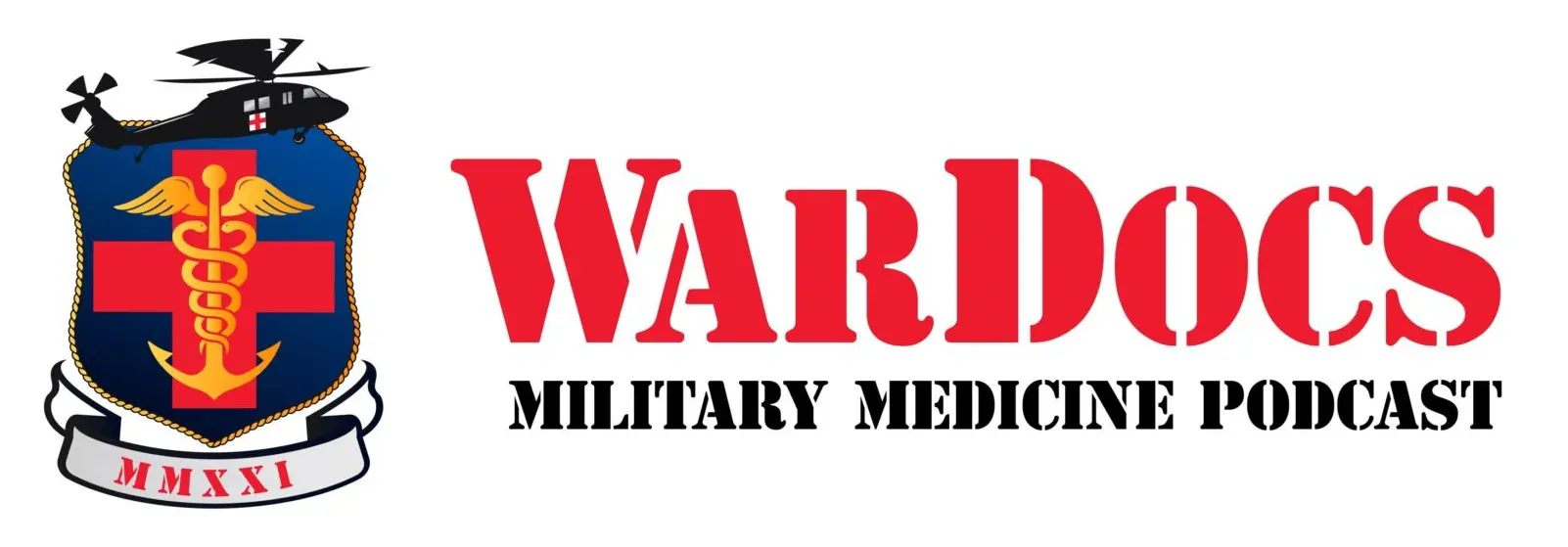Mitigating the Hypothermic Threat

Dr. John Castellani

Dr. Billie Alba
From Combat & Casualty Care , August 2022
Dr. John Castellani is a Research Physiologist and the Deputy Division Chief, Thermal and Mountain Medicine Division, U.S. Army Research Institute of Environmental Medicine, Natick, MA. His research interests are in environmental and exercise physiology, including human thermoregulation and performance sustainment in cold weather environments, developing methodologies and techniques to increase peripheral blood flow in the hands and feet during cold-weather operations, and improving hand and foot function. He is also involved in developing preventative guidance to decrease the risk of frostbite, non-freezing cold injuries, and hypothermia.
Dr. Billie Alba is a Research Physiologist, Thermal and Mountain Medicine Division, U.S. Army Research Institute of Environmental Medicine, Natick, MA . Her research is focused on the regulation of peripheral blood flow during environmental stress and examines the effects of physiological, pharmacological, and nutritional interventions on cold injury risk and manual performance in cold weather environments. She has secured grant funding through the American Heart Association and U.S. Army Medical Research and Development Command Military Operational Medical Research Program.
Combat & Casualty Care spoke recently with Dr. John Castellani, Research Physiologist and Deputy Division Chief, Thermal and Mountain Medicine Division, U.S. Army Research Institute of Environmental Medicine (USARIEM), Natick, MA, and Dr. Billie Alba, a fellow Research Physiologist, Thermal and Mountain Medicine Division. The discussion focused on their current cold-weather research efforts, the concepts of vasodilation and vasoconstriction, and the impact of ischemic pre-conditioning on hand and finger blood flow in low-temperature environments.
C&CC: Can you explain a few current, modern-day challenges relating to cold weather (and cold injury) casualty care in both combat and non-combat scenarios?
Dr. Castellani and Dr. Alba: There are many challenges for casualty care in cold weather. These include keeping patients warm in the field environment, administering intravenous fluids (fluids can and do freeze), setting up casualty collection points, moving patients across terrain, slower response times for medical evacuation and maintaining the level of warmth in medical tents required for treatment. For the medic and health care provider, one of the biggest issues is the loss of manual dexterity which affects their ability to treat casualties. They also need to keep fluids and medications warm so they remain efficacious, and further need to keep any metal surgical tools warm so the instrument doesn’t cause contact frostbite because they are very cold. Another issue is that medical gloves can become brittle in very cold temperatures and can break, exposing the provider to biologics.
C&CC: Please explain your work with the concept and practice of vasodilation. How does this method work, exactly – and what are challenges to its effectiveness?
Dr. Castellani and Dr. Alba: The body’s primary response upon entering a cold environment is to reduce blood flow in order to conserve heat. This is known as vasoconstriction; blood vessels get smaller causing less flow. This protects us against hypothermia, but it also leads to low skin temperatures. With regard to the peripheral regions of our body, such as the feet and hands, this reduced blood flow can lead to functional changes such as impaired manual dexterity. Most people understand that in cold weather, they have a harder time using their hands. Vasodilation is the opposite of vasoconstriction; the blood vessels open up and blood flow increases. Our current work trying to improve manual dexterity is predicated on the concept that we can overcome cold-induced vasoconstriction and increase blood flow to the periphery.
C&CC: From a nutraceutical perspective, speak to the variation from pharmaceutical-based treatment(s) and how this specific application addresses issues related to cold weather performance for Soldiers.
Dr. Castellani and Dr. Alba: Pharmaceutical agents are primarily used to treat cold injuries, such as frostbite. They are not routinely used to prevent vasoconstriction and improve hand function in the cold. Pharmacologics are, however, sometimes prescribed in individuals who suffer from Raynaud’s Phenomenon, a clinical condition that is characterized by excessive reductions in blood flow to the hands and feet when exposed to cold temperatures. While drug therapies can be effective in improving symptoms of Raynaud’s Phenomenon and can inform us on molecules to target for lessening cold-induced vasoconstriction; current drug therapies often include oral vasodilators that are associated with adverse side effects – for example, hypotension and headache – and require careful dosing. Therefore, we are interested in exploring more targeted countermeasures and nutraceutical approaches that improve blood flow in the hands and feet but do not have significant systemic side effects. For Soldiers, nutraceuticals have the potential to provide a safe and effective solution and, moreover, can be incorporated into cold-weather rations without adding to Soldier load and burden.
C&CC: In terms of enhancing dexterity to avoid injury (and presumably to improve function) in cold weather environments, what are your current areas of research – and how, exactly, will you apply those to real-world environments?
Dr. Castellani and Dr. Alba: Our current areas of research to improve dexterity are tackling the problem from both a technological and physiological solution. For the technological approach, we are working on methods to deliver exogenous heat to relatively small body areas that will lead to an increase in hand and finger temperature and manual dexterity. We have completed proof-of-concept work showing that applying heat to the forearm increases hand and finger temperatures by about three degrees Celsius; efforts which led to a 20-50% improvement in gross and fine motor dexterity and a 90% improvement in finger strength. We recently built a prototype at USARIEM to bring to Operation Arctic Eagle/Patriot in Alaska in February so that we could receive user feedback to help with further design. We hope this effort will transition to advanced development soon.
For the physiological approach, we have multiple efforts currently taking place. In fact, we recently completed one such effort using cocoa-based bioflavanols to improve finger temperatures. Other research showed these compounds impact peripheral blood flow, but this was not tested in cold conditions. We studied the effects of the bioflavanols on the cold-induced vasodilation response, but we found that it not improve Cold-Induced Vasodilatation (CIVD) or finger temperatures. We are also examining the effects of multiple days of cold exposure on the peripheral blood flow responses to cold and the physiological mechanisms that change due to multiple cold exposures. Once we have a better understanding of how repeated cold exposures impact blood flow response to the hands and fingers, we can develop specific countermeasures and training protocols to help Soldiers improve dexterity and hand comfort. Finally, we are going to examine the effect of ischemic pre-conditioning on hand and finger blood flow. Intermittent Pneumatic Compression (IPC) is a protocol where blood flow is occluded for five minutes using an applied cuff which is then released. This pattern of occlusion-and-release is repeated for a total of 30 minutes. This ischemia-reperfusion causes profound vascular changes that we believe will improve vasodilation in cold conditions, leading to higher hand and finger temperatures and better manual dexterity.
C&CC: What are some other similar or related projects USAIREM is focusing on going forward?
Dr. Castellani and Dr. Alba: USARIEM has a comprehensive program across all of our research divisions to reduce cold-weather injuries and improve human performance in cold-weather/Arctic environments. We have developed applications to enable Warfighters to choose the right cold-weather clothing based on environmental temperatures and mission set (the Cold-Weather Ensemble Decision Aid), as well as have developed the Probability of Survival Decision Aid to help search and rescue efforts determine the probability of hypothermia. We have several research projects examining the physiological responses to cold-wet environments (e.g., raining, emerging onto land after being immersed) as well as during cold-water immersion. We will develop guidance from these studies to lower the risk of hypothermia. Other efforts will develop novel work-rest cycles to improve operational performance and reduce susceptibility to injury, develop countermeasures in fatigued Soldiers during cold-weather operations and examine genetic markers to understand which Soldiers are most at risk of a cold-weather injury. USARIEM is also working on using multiple cold-water exposures to improve health and performance when exposed to high-altitude environments. USARIEM is also teaming with various industry partners to develop nanofibers to measure peripheral temperatures in gloves and other equipment. Finally, USARIEM is the lead agency on the revision of Technical Bulletin MED 508, “Prevention and Treatment of Cold-Weather Injuriesâ€. This is the official Army guidance for preventing and treating all cold-weather injuries. This revision is comprised of a 25-member team consisting of Army, Air Force, and Special Operations Command medical providers, as well as clothing developers and training/operational personnel – all of whom provide input.

